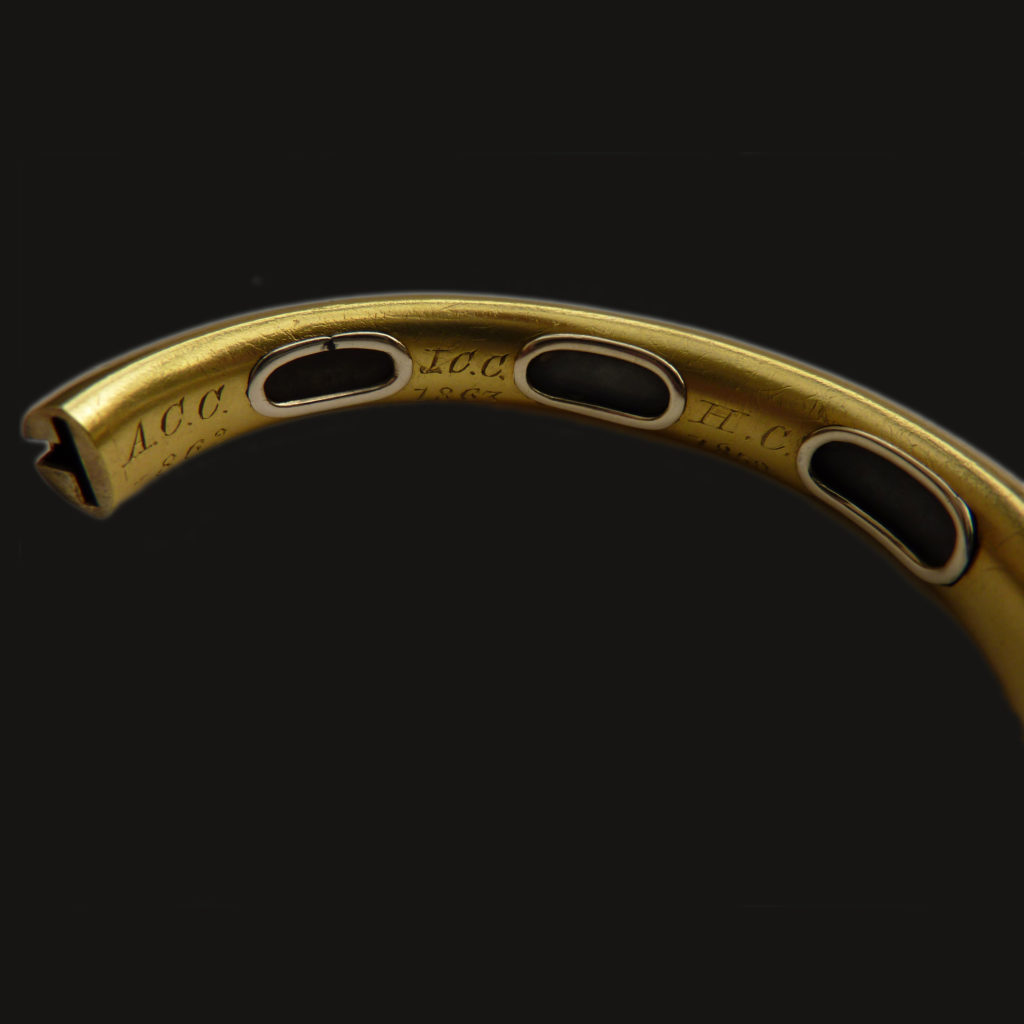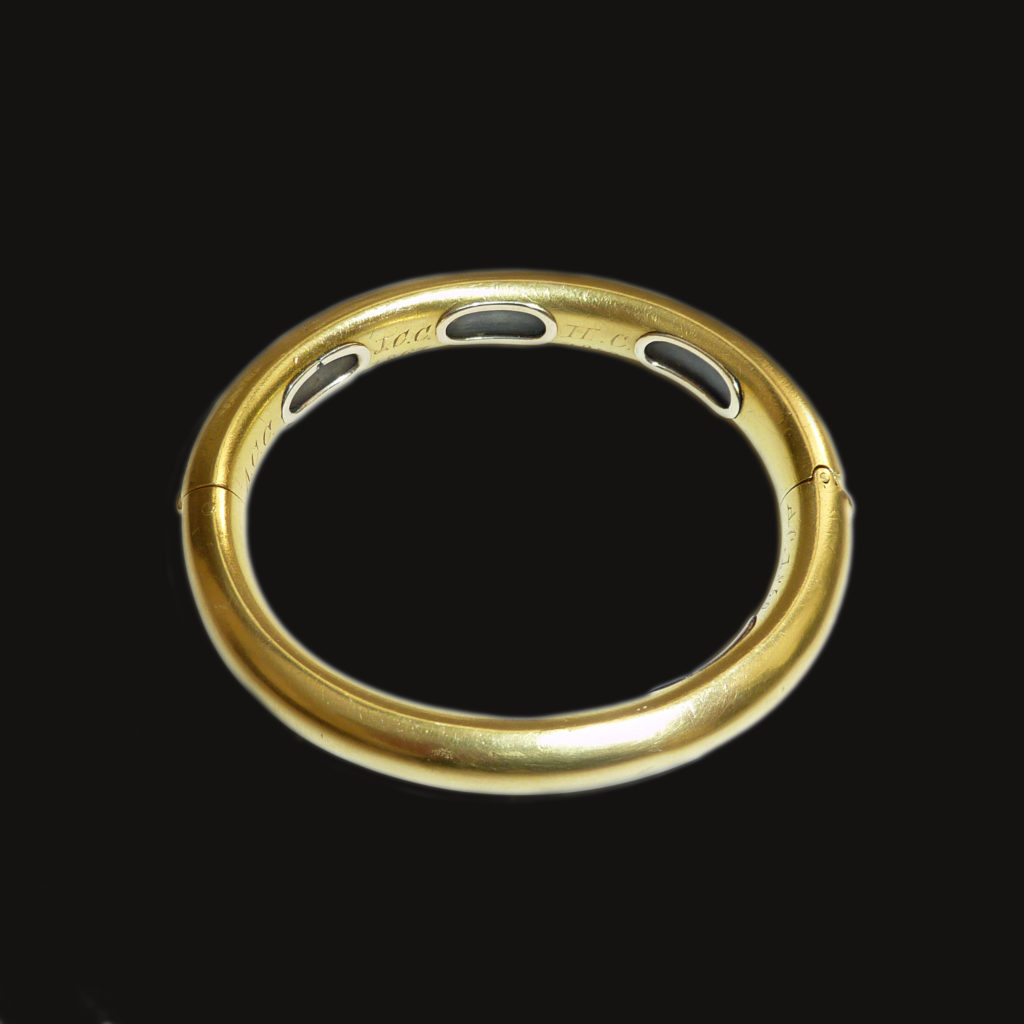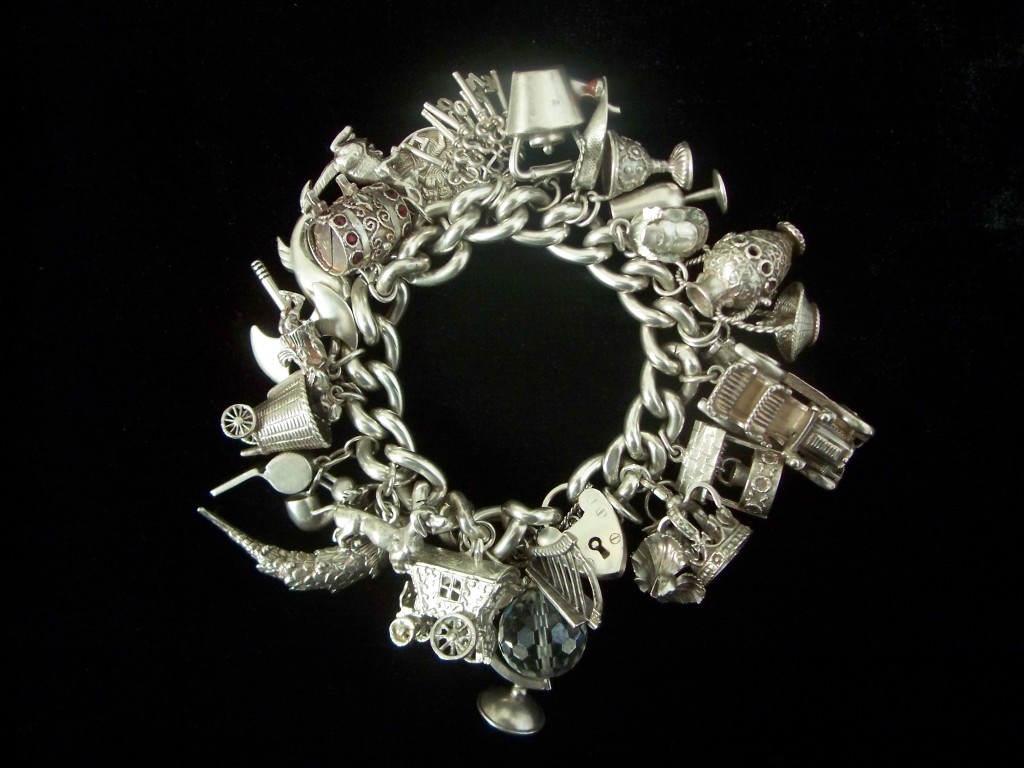Pressed Horn Forget-Me-Not Bracelet
This pressed horn example is surrounded by the forget-me-not pattern, and is showing signs of discolouration and chipping. The forget-me-nots are upon each individual panel and the bracelet expands to fit over the hand.
An early plastic, horn is a material that was popular during the latter 19th century and can be found with many of the jewels which mimicked the style of jet jewellery, though as it was pressed, rounded corners and set styles could be produced in high frequency and at lower cost.
Horn can be moulded when heat and pressure are applied, hence the ‘pressing’ of the term ‘pressed horn’ that many collectors understand today. Heat can be reapplied and horn can be remoulded, making it a malleable thermoplastic protein.
Though popular in the 19th century, horn was a material that was used prolifically in the 18th century, most notably for high-relief work (the tops of tobacco boxes, buttons, inkboxes, plaques and other embossed paraphernalia). It was used earlier in the Middle Ages, to a degree where it was part of the allied trades of the time, in conjunction with such trades as the Tanners.
Now, let’s look to the symbolism of the forget-me-not. “Forget-me-not, O Lord!” is what a poor German knight shouted as he fell into a river. He and his lady were picking flowers by the side of the river at the time, no doubt enjoying the beautiful day around them, and yet as fate would have it, the knight’s armour dragged him down to the bottom as he fell in. Upon his cries to the Lord, he threw the blue posy of flowers to his loved one and promptly drowned. This little tale reportedly dates to around the 15th century, but no doubt had different permeations along the way, as romantic stories often do. Hence, the concept of remembrance, eternal love and faithfulness grow from this.

Now that we have the tales out of the way, the symbolism of the forget-me-not is obviously implied within its name. It should also be noted that the flower grows quite ubiquitously in Europe, America and Asia. Its first use in English literature is reportedly from c.1532 and is otherwise named Myosotis (mouse’s ear). Interestingly enough is the rise of the flower’s popularity c.15-16th centuries. This is what we, as jewellery historians, need to understand. From this, we have the popularity of the posy ring and its use as a love token in jewellery. The posy (poesy, posie, posey) emerged at a time when modern society was developing through a shift back to the personal and emerging from the middle ages and its strict adherence to ecclesiastical living. Giving a ring with an inscription on the inside as a token of love was a profound statement, it showed that relationships were increasingly interpersonal and not decreed before god. It was between the couple. Hence, the forget-me-not was used as a decoration (often crude) in some of these rings to denote its message of love and remembrance.
During the 17th and 18th centuries, the use of the forget-me-not didn’t change, however, it did blend in well with the Rococo and Baroque excess of design well enough that it could balance with other flowers and leaf motifs. By the time of the Neoclassical period, its use was relegated more towards being a footnote in memorial jewel depictions painted on ivory. During this time and the rise of hairwork weaves becoming mainstream and popular, the forget-me-not did become a symbol used to create floral depictions from hair.
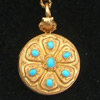
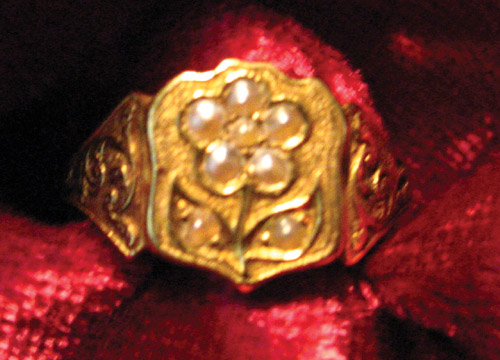
In all, the symbolism and the curvature to the high-relief designs of this bracelet show just how wonderful and unique pressed horn is as a material. Designs could be more intricate, which doesn’t take the uniqueness away from hand carved jet, but amplifies the detail of set moulds which could produce some stunning imagery.
A History of Jet
> Bakelite
> Vulcanite
> Bog Oak
> French Jet and Vauxhall Glass





